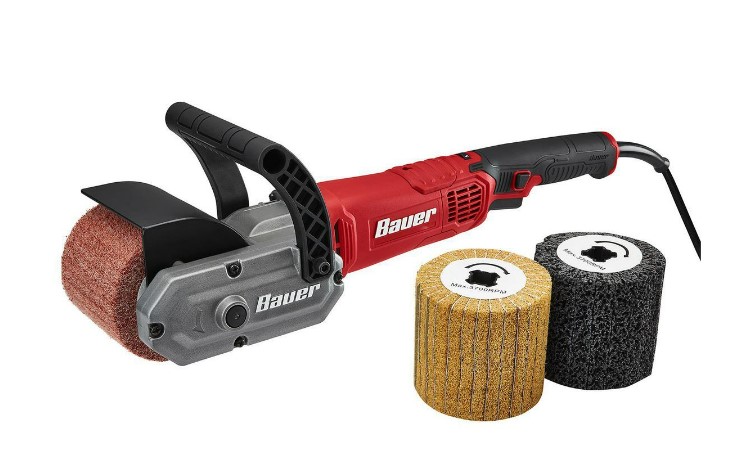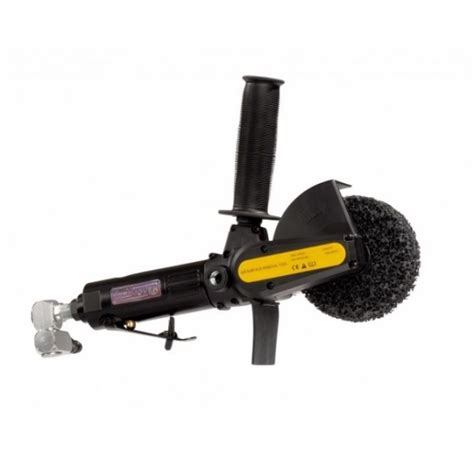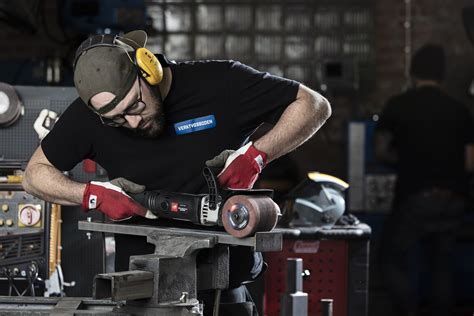The surface conditioning tool is a crucial component in various industries, including manufacturing, construction, and automotive repair. Its primary function is to prepare surfaces for subsequent processing, such as painting, coating, or bonding, by removing contaminants, imperfections, and irregularities. In this article, we will delve into the world of surface conditioning tools, exploring their types, applications, and benefits, as well as the factors to consider when selecting the right tool for a specific task.
Key Points
- The surface conditioning tool is used to prepare surfaces for subsequent processing by removing contaminants and imperfections.
- There are various types of surface conditioning tools, including abrasives, chemical cleaners, and mechanical tools.
- Surface conditioning tools have numerous applications in industries such as manufacturing, construction, and automotive repair.
- When selecting a surface conditioning tool, factors such as surface type, material, and desired outcome must be considered.
- Proper use and maintenance of surface conditioning tools are essential to ensure optimal performance and extend their lifespan.
Types of Surface Conditioning Tools

Surface conditioning tools can be broadly categorized into three main types: abrasives, chemical cleaners, and mechanical tools. Abrasives, such as sandpaper, grinding wheels, and honing stones, use friction to remove contaminants and smooth out surfaces. Chemical cleaners, on the other hand, utilize solvents or other chemicals to dissolve and remove impurities. Mechanical tools, including scrapers, brushes, and buffing wheels, employ physical force to remove debris and condition surfaces.
Abrasives
Abrasives are the most commonly used surface conditioning tools, and they come in various forms and grit sizes. The choice of abrasive depends on the surface material, the level of contamination, and the desired finish. For example, coarse-grit sandpaper is suitable for removing old paint or rust, while fine-grit sandpaper is better for smoothing out surfaces. Aluminum oxide and silicon carbide are popular abrasive materials due to their high hardness and effectiveness in removing contaminants.
Chemical Cleaners
Chemical cleaners are used to remove grease, oil, and other substances that cannot be easily removed by abrasives or mechanical tools. They are particularly useful in industries where surfaces need to be thoroughly cleaned before processing. However, chemical cleaners can be hazardous to health and the environment, and their use must be carefully controlled and monitored. Solvent-based cleaners and water-based cleaners are two common types of chemical cleaners, each with its own advantages and disadvantages.
Mechanical Tools
Mechanical tools are used to remove debris and condition surfaces through physical force. They are often used in conjunction with abrasives or chemical cleaners to achieve the desired finish. Scrapers and brushes are commonly used mechanical tools, and they come in various shapes, sizes, and materials to suit different applications.
| Surface Type | Recommended Tool |
|---|---|
| Metal | Abrasives (sandpaper, grinding wheels) |
| Wood | Mechanical tools (scrapers, brushes) |
| Plastic | Chemical cleaners (solvent-based, water-based) |

Applications and Benefits

Surface conditioning tools have numerous applications in various industries, including manufacturing, construction, and automotive repair. They are used to prepare surfaces for painting, coating, or bonding, and to remove contaminants and imperfections that can affect the quality of the finish. The benefits of using surface conditioning tools include improved surface finish, increased adhesion, and reduced rework and repair costs.
Manufacturing
In manufacturing, surface conditioning tools are used to prepare surfaces for subsequent processing, such as machining, welding, or assembly. They are particularly useful in industries where high-precision surfaces are required, such as aerospace and automotive manufacturing.
Construction
In construction, surface conditioning tools are used to prepare surfaces for painting, coating, or bonding. They are particularly useful in industries where surfaces need to be thoroughly cleaned and prepared before applying finishes, such as in building construction and renovation.
Automotive Repair
In automotive repair, surface conditioning tools are used to prepare surfaces for painting, coating, or bonding. They are particularly useful in industries where surfaces need to be thoroughly cleaned and prepared before applying finishes, such as in collision repair and refinishing.
What is the purpose of surface conditioning tools?
+The purpose of surface conditioning tools is to prepare surfaces for subsequent processing by removing contaminants and imperfections.
What are the different types of surface conditioning tools?
+Surface conditioning tools can be broadly categorized into three main types: abrasives, chemical cleaners, and mechanical tools.
How do I choose the right surface conditioning tool for my application?
+When selecting a surface conditioning tool, consider the surface type, material, and desired outcome. It is also essential to follow the manufacturer's instructions and take necessary safety precautions.
In conclusion, surface conditioning tools are essential components in various industries, and their proper use and maintenance are critical to achieving optimal performance and extending their lifespan. By understanding the different types of surface conditioning tools, their applications, and benefits, industries can improve surface finish, increase adhesion, and reduce rework and repair costs.
